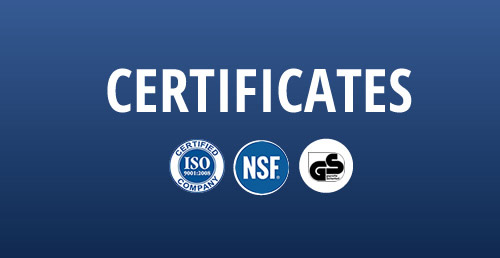foundation anchor bolt types
Foundation Anchor Bolt Types An Overview
Anchor bolts are critical components in construction, providing the necessary connection between structural elements and their foundations. They secure structures to their foundations and are essential for maintaining stability, supporting loads, and resisting lateral forces caused by wind, seismic activity, or other dynamic pressures. Understanding the various types of foundation anchor bolts is crucial for engineers, architects, and contractors to choose the appropriate design for particular applications. This article will explore several common types of anchor bolts, their uses, and key considerations for selecting the right type for your project.
Types of Anchor Bolts
1. L-Bolts L-bolts, or L-shaped anchor bolts, feature a bend at one end that forms an L shape. This design allows the bolt to grip the concrete foundation securely. L-bolts are typically embedded into wet concrete and are often used in place where a vertical member, such as a column, will be positioned over the bolt. The shape provides resistance against pull-out forces, making it ideal for applications requiring strong anchorage.
2. J-Bolts J-bolts have a hook-like end that extends from the straight shaft, resembling the letter J. Similar to L-bolts, these are often cast into the concrete. The hook end increases the surface area for attachment, making J-bolts particularly effective for anchoring structures subjected to tensile forces. They are commonly used in foundations for fences, signposts, and light poles.
3. Straight Anchor Bolts As the name suggests, straight anchor bolts have a uniform shape with no bends. These bolts are used in applications where the connection needs to be flush with the surface of the slab. Straight bolts can be installed with plates or nuts, which are tightened to secure the structural member. They are versatile and can be used in various applications, from building frames to machinery installations.
4. Expansion Bolts Expansion bolts are designed for use in existing concrete structures. These bolts have a mechanism that expands as the bolt is tightened, creating a secure grip within the concrete. Expansion bolts are ideal for applications where drilling into a pre-existing structure is necessary. They are widely used for anchoring machinery, brackets, and railings in heavy applications.
foundation anchor bolt types

5. Chemical Anchors Chemical anchor systems utilize a resin-based adhesive to bond the anchor bolt to the substrate. A hole is drilled into the concrete, and a two-part epoxy is injected, followed by inserting the bolt. As the adhesive cures, it forms a robust bond with the surrounding concrete. Chemical anchors are excellent for high-load applications and where traditional mechanical fasteners might not suffice, such as in cracked or hard-to-reach areas.
6. Post-Installed Anchors Post-installed anchors are used for applications where a structure needs to be secured to an existing concrete element. Various types of post-installed anchors, including mechanical and adhesive options, can be used depending on the load requirements and conditions. They are particularly useful in renovations and retrofitting projects.
Key Considerations
When selecting the appropriate type of anchor bolt, several factors must be considered
- Load Requirements Whether the structure will experience tension, shear, or both will influence the choice of anchor type. - Environmental Conditions Exposure to moisture, chemicals, or extreme temperatures can affect the material choice and type of anchor. - Concrete Quality The strength and condition of the concrete determine the effectiveness of various anchor types. - Installation Method Consideration for whether the installation will occur in new or existing concrete can impact anchor selection.
In conclusion, understanding the various types of foundation anchor bolts and their applications is essential for ensuring the safety and stability of construction projects. By carefully considering the specific needs of each project, engineers and contractors can select the most suitable anchors to provide long-lasting support and security.
-
Why Wedge Anchors Are Perfect for Garden ProjectsHabariApr.16,2025
-
Why Choose Standard Wedge Bolt for Your Next Project?HabariApr.16,2025
-
How Wedge Anchors Enhance the Stability of Concrete StructuresHabariApr.16,2025
-
Create Custom Woodwork with Wedge Anchors for ConcreteHabariApr.16,2025
-
Build Sturdy Office Furniture with Wedge Anchors for ConcreteHabariApr.16,2025
-
Best Anchors for Every Project: Wedge Anchors EditionHabariApr.16,2025
